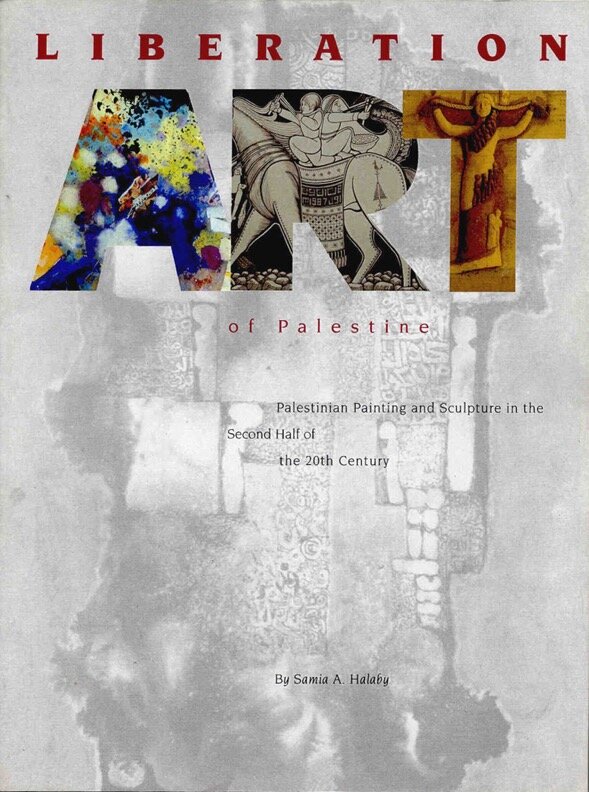Liberation Art of Palestine - Palestinian Painting and Sculpture in the Second Half of the 20th Century
Book is available to purchase directly from the publisher. Please use the “Get In Touch” button on the contact page to reach the publisher directly.
By Samia A. Halaby
Art in Palestine is part of the liberation struggle. In her book Liberation Art of Palestine, Samia A. Halaby puts this art in context, explains its symbols, development and historical roots, and gives important insights into one of the conflicts shaking the world today. Material conditions sometimes made traditional art materials hard to find, so artists turned to using bits of exploded shell casings, leather and parts of houses destroyed by the Israeli army in their compositions. In spite of repression and attacks, Palestinian artists persisted. Halaby focuses her book on two broad movements of Palestinian art. One grew up in the liberation movement in Lebanon during the 1970s and the other drew its impulse from the first Intifada. She puts them in their Arab context, since the Palestinians are an Arab people, and shows their relation to the visual forms produced by Cubism, Futurism, Constructivism and the Mexican mural tradition, all of which reflect a revolutionary base. The use of certain symbols in Palestinian art--the cactus, the eye, the horse, the mother--is explained by Halaby in clear and illuminating detail. Full-color plates in the back of the book represent the work of many of the artists discussed, who are carefully put in their cultural and political context. As Halaby states, “The whole point of this book is to illustrate and explain that the true art of Palestine rests on the Palestinian struggle for liberation."
